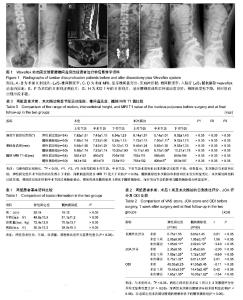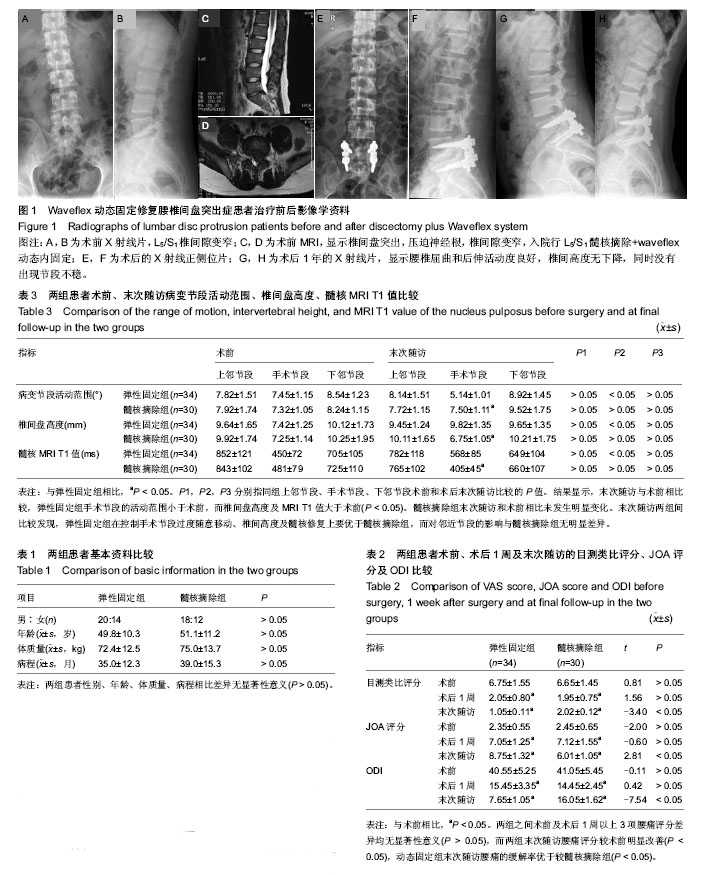| [1] Karamouzian S, Ebrahimi-Nejad A, Shahsavarani S, et al. Comparison of two methods of epidural steroid injection in the treatment of recurrent lumbar disc herniation. Asian Spine J. 2014;8(5):646-652.
[2] Yu PF, Jiang H, Liu JT, et al. Traditional Chinese medicine treatment for ruptured lumbar disc herniation: clinical observations in 102 cases. Orthop Surg. 2014;6(3):229-235.
[3] Apfel CC, Cakmakkaya OS, Martin W, et al. Restoration of disk height through non-surgical spinal decompression is associated with decreased discogenic low back pain: a retrospective cohort study. BMC Musculoskelet Disord. 2010;11:155.
[4] Salfinger H, Salomonowitz G, Friedrich KM, et al. Nuclear magnetic resonance therapy in lumbar disc herniation with lumbar radicular syndrome: effects of the intervention on pain intensity, health-related quality of life, disease-related disability, consumption of pain medication, duration of sick leave and MRI analysis. Eur Spine J. 2014.
[5] Shimia M, Parish M, Abedini N. The effect of intravenous paracetamol on postoperative pain after lumbar discectomy. Asian Spine J. 2014;8(4):400-404.
[6] Wu X, Ma W, Du H, et al. A review of current treatment of lumbar posterior ring apophysis fracture with lumbar disc herniation. Eur Spine J. 2013;22(3):475-488.
[7] Saavedra-Pozo FM, Deusdara RA, Benzel EC. Adjacent segment disease perspective and review of the literature. Ochsner J. 2014;14(1):78-83.
[8] Shuang F, Hou S. [Present clinical research situation of adjacent segment degeneration after lumbar spinal fusion]. Zhongguo Xiu Fu Chong Jian Wai Ke Za Zhi. 2013;27(1): 110-115.
[9] Serhan HA, Varnavas G, Dooris AP, et al. Biomechanics of the posterior lumbar articulating elements. Neurosurg Focus. 2007; 22(1):E1.
[10] Yang B, Jiang T. Comparative study of dynamic neutralization system and posterior lumbar interbody fusion in treating lumbar degenerative disease. Zhongguo Xiu Fu Chong Jian Wai Ke Za Zhi. 2013;27(2): 140-144.
[11] Lin HM, Pan YN, Liu CL, et al. Biomechanical comparison of the K-ROD and Dynesys dynamic spinal fixator systems - a finite element analysis. Biomed Mater Eng. 2013;23(6): 495-505.
[12] Majeed SA, Vikraman CS, Mathew V, et al. Comparison of outcomes between conventional lumbar fenestration discectomy and minimally invasive lumbar discectomy: an observational study with a minimum 2-year follow-up. J Orthop Surg Res. 2013;8:34.
[13] Takahashi T, Hanakita J, Watanabe M, et al. [Systematic review of complications for proper informed consent(12)decompression or fixation surgery of the lumbar spine]. No Shinkei Geka. 2014;42(3):249-267.
[14] Wang H, Lin HB. [Research process on dynamic stabilization system of low back pain]. Zhongguo Gu Shang. 2008;21(1): 76-78.
[15] Kelly MP, Mok JM, Berven S. Dynamic constructs for spinal fusion: an evidence-based review. Orthop Clin North Am. 2010;41(2):203-215.
[16] Zhou ZJ, Xia P, Zhao X, et al. Can posterior dynamic stabilization reduce the risk of adjacent segment deterioration? Turk Neurosurg. 2013;23(5):579-589.
[17] Nockels RP. Dynamic stabilization in the surgical management of painful lumbar spinal disorders. Spine (Phila Pa 1976). 2005; 30(16 Suppl):S68-72.
[18] Sengupta DK. Dynamic stabilization devices in the treatment of low back pain. Neurol India. 2005; 53(4):466-474.
[19] Rihn JA, Kurd M, Hilibrand AS, et al. The influence of obesity on the outcome of treatment of lumbar disc herniation: analysis of the Spine Patient Outcomes Research Trial (SPORT). J Bone Joint Surg Am. 2013;95(1):1-8.
[20] Shin BJ. Risk factors for recurrent lumbar disc herniations. Asian Spine J. 2014;8(2):211-215.
[21] Cao P, Chen Z, Zheng Y, et al. Comparison of simple discectomy and instrumented posterior lumbar interbody fusion for treatment of lumbar disc herniation combined with Modic endplate changes. Chin Med J (Engl). 2014;127(15): 2789-2794.
[22] Zöllner J, Löw R, Sancaktaroglu T, et al. [Radiological assessment of loss of disk height in acute and chronic degenerative lumbar disk changes]. Rofo. 2001;173(3): 187-190.
[23] Schmoelz W, Erhart S, Unger S, et al. Biomechanical evaluation of a posterior non-fusion instrumentation of the lumbar spine. Eur Spine J. 2012;21(5):939-945.
[24] Liu J, Liu H, Li GH, et al. [The mid-term follow-up of Coflex non-fusion internal fixation in the treatment of degenerative lumbar disease]. Zhonghua Wai Ke Za Zhi. 2013;51(2): 142-146.
[25] Otsuki B, Fujibayashi S, Takemoto M, et al. Diffuse idiopathic skeletal hyperostosis (DISH) is a risk factor for further surgery in short-segment lumbar interbody fusion. Eur Spine J. 2014.
[26] Wang MY, Vasudevan R, Mindea SA. Minimally invasive lateral interbody fusion for the treatment of rostral adjacent-segment lumbar degenerative stenosis without supplemental pedicle screw fixation. J Neurosurg Spine. 2014;21(6):861-866.
[27] Yee TJ, Terman SW, La Marca F,et al.Comparison of adjacent segment disease after minimally invasive or open transforaminal lumbar interbody fusion. J Clin Neurosci. 2014; 21(10): 1796-1801.
[28] Ohtonari T, Nishihara N, Suwa K, et al. Dynamic stabilization for degenerative spondylolisthesis and lumbar spinal instability. Neurol Med Chir (Tokyo). 2014;54(9):698-706.
[29] Canbay S, Aydin AL, Aktas E, et al. Posterior dynamic stabilization for the treatment of patients with lumbar degenerative disc disease: long-term clinical and radiological results. Turk Neurosurg. 2013;23(2):188-197.
[30] Zhang L, Shu X, Duan Y, et al. [Effectiveness of ISOBAR TTL semi-rigid dynamic stabilization system in treatment of lumbar degenerative disease]. Zhongguo Xiu Fu Chong Jian Wai Ke Za Zhi. 2012;26(9):1066-1070.
[31] Oktenoglu T, Ozer AF, Sasani M, et al. Posterior Transpedicular Dynamic Stabilization versus Total Disc Replacement in the Treatment of Lumbar Painful Degenerative Disc Disease: A Comparison of Clinical Results. Adv Orthop. 2013;2013: 874090. |

